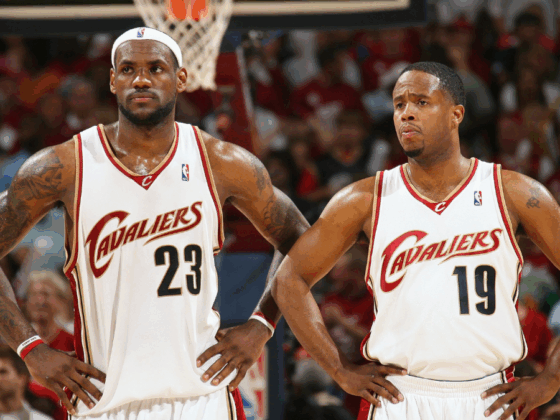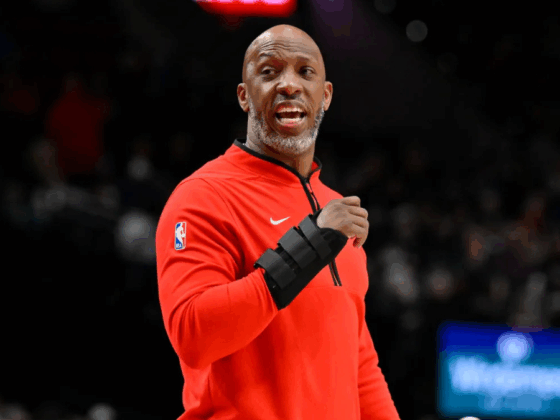
The Pro Football Hall of Fame represents a place for players who were so indispensable to the overall story of the game of football that they deserve immortality. Though not exactly the common makeup of a traditional class (no offensive skill position players), the 2019 Pro Football Hall of Fame class certainly boasts a great deal of once-in-a-generation type players.
Ed Reed
Throughout his career, Reed displayed an ability to make plays from the safety position that few in the history of the game possessed. Over 13 seasons, Ed Reed intercepted 64 passes and gained 1,590 yards on returns during those picks. He also turned seven of them into touchdowns. He also forced 11 fumbles and recovered 13, turning two of those into scores. Additionally, Reed accumulated 643 total tackles and six sacks. He was the complete package on the backend of the defense. Reed was named to eight All-Pro teams and was the 2004 AP Defensive Player of the Year.
I was a 2 star recruit… now HOF. Beyond thankful ?? pic.twitter.com/fOb8MWkuMX
— Ed Reed (@TwentyER) February 2, 2019
Tony Gonzalez
When Gonzalez entered the league in 1997, he ushered in the pass-catching, basketball-playing, power forward-type tight end into NFL football. It might sound a little cliche, but Gonzalez broke the mold of what was the commonly-held notion of what a tight end does and how the position is played. The ten-time All-Pro tight end played 17 years and had 1,325 catches for 15,127 yards. But he really did damage in the red zone, as evidenced by his 111 touchdowns.
Champ Bailey
Up until Champ Bailey came along, Deion Sanders was about the only player who played cornerback and would be considered the best athlete on the field. It just wasn’t all that cool to play cornerback. Generally, the most talented players found their way to the offensive side of the football. Then Sanders came along, with Bailey shortly after, and together they threw the traditional makeup of a cornerback out the window. Bailey played 15 years, secured 52 interceptions and scored touchdowns on four of them. He also accounted for 908 total tackles over that span as well and was named to eight All-Pro squads.
Ty Law
In Law’s 15 seasons, he might have slipped under the radar a bit just by virtue of playing in the same era as Bailey, Reed, and other defensive backs that played with a little more flash, for lack of a better term. But Law’s numbers are right in line with any other Hall of Fame cornerback. He picked off 53 passes in his career, returning seven of them for touchdowns and made 838 total tackles. Law was named to two All-Pro teams over the course of his career.
Kevin Mawae
It’s hard to quantify the production of a center in easily understandable stats. There’s isn’t a “great block” section in the box score. But if there was, Mawae would have been near the top of the category throughout his 16-year career. And when a lineman is as talented as Mawae, the next big hurdle is staying healthy and on the field. Which was something the former center did as well as anyone who’s ever played. In all but one season, Mawae played in 14 games or more. In 12 of his 16 seasons, he didn’t miss a single game.
Johnny Robinson
Robinson played from 1960 to 1971. The start of his career represented a time when players played both sides of the ball. Thus, Robinson played flanker/wide receiver and safety as a professional. However, around 1962 players started specializing in one position. When that happened, Robinson turned into a full-time safety and was one of the league’s best for the bulk of his career.
Pat Bowlen
In 1982, Bowlen became the principal owner of the Denver Broncos and has served as such ever since. Over that span, the team has won the AFC Championship seven times and took home the Lombardi Trophy three times.
Gil Brandt
Brandt started in professional football in 1955 as a part-time scout for the Los Angeles Rams. He then moved on to a full-time role with the San Francisco 49ers. However, his most notable contribution to the sport came with the Dallas Cowboys, the team for whom he worked for from 1960-1988. Although he might not be a household name to even some die-hard football fans, his work comes up at least once a year, as he is credited as being the person who introduced the football world to something close to the modern valuation of draft picks.






